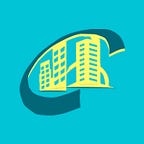Difference Between Particle Board vs MDF vs Plywood
Are you planning a woodworking project and feeling overwhelmed by the options available? Particle board, MDF (Medium Density Fiberboard), and plywood are three common materials used in furniture and construction, but they each have their own unique characteristics and applications. In this guide, we’ll break down the differences between particle board, MDF, and plywood to help you make an informed decision for your next project.
Particle Board
Particle board is made from wood particles, such as sawdust, wood chips, and shavings, that are bonded together with resin and compressed under high pressure. It is an affordable option and often used in furniture, cabinets, and shelving. However, particle board is not as strong or durable as MDF or plywood, and it can be prone to swelling or warping when exposed to moisture.
MDF (Medium Density Fiberboard)
MDF is made from fine wood fibers that are combined with wax and resin, then compressed into dense sheets. It is smoother and more uniform in texture than particle board, making it ideal for applications where a smooth surface is desired, such as cabinetry, furniture, and molding. MDF is also more durable than particle board and less prone to warping, but like particle board, it can swell when exposed to moisture.
Plywood
Plywood is made from thin layers of wood veneer that are glued together with the grain of each layer perpendicular to the one above and below it. This cross-grain construction gives plywood its strength and stability, making it suitable for a wide range of applications, including flooring, roofing, and furniture construction. Plywood is more expensive than particle board or MDF, but it is also more durable and versatile.
Cost Comparison
Key Differences
- Strength and Durability: Plywood is the strongest and most durable of the three materials, followed by MDF and then particle board.
- Moisture Resistance: Plywood has the best moisture resistance, while MDF is more resistant than particle board.
- Surface Texture: Particle board has a rough texture, while MDF has a smooth, uniform surface. Plywood may have a rough or smooth texture, depending on the grade and finish.
Conclusion
In summary, when choosing between particle board, MDF, and plywood, consider the specific requirements of your project, including strength, durability, moisture resistance, and surface texture. Particle board is a budget-friendly option suitable for interior projects with low moisture exposure, while MDF offers a smoother surface and better durability. Plywood is the strongest and most versatile option, making it suitable for a wide range of applications.
If you’re still confused, please don’t hesitate to contact us. Our team of experts at Creative Design Studios is always available to answer your questions and help you.
We hope our blog post has provided you with valuable insights into the differences between particle board, MDF, and plywood. Please let us know your comments.
Read More:
